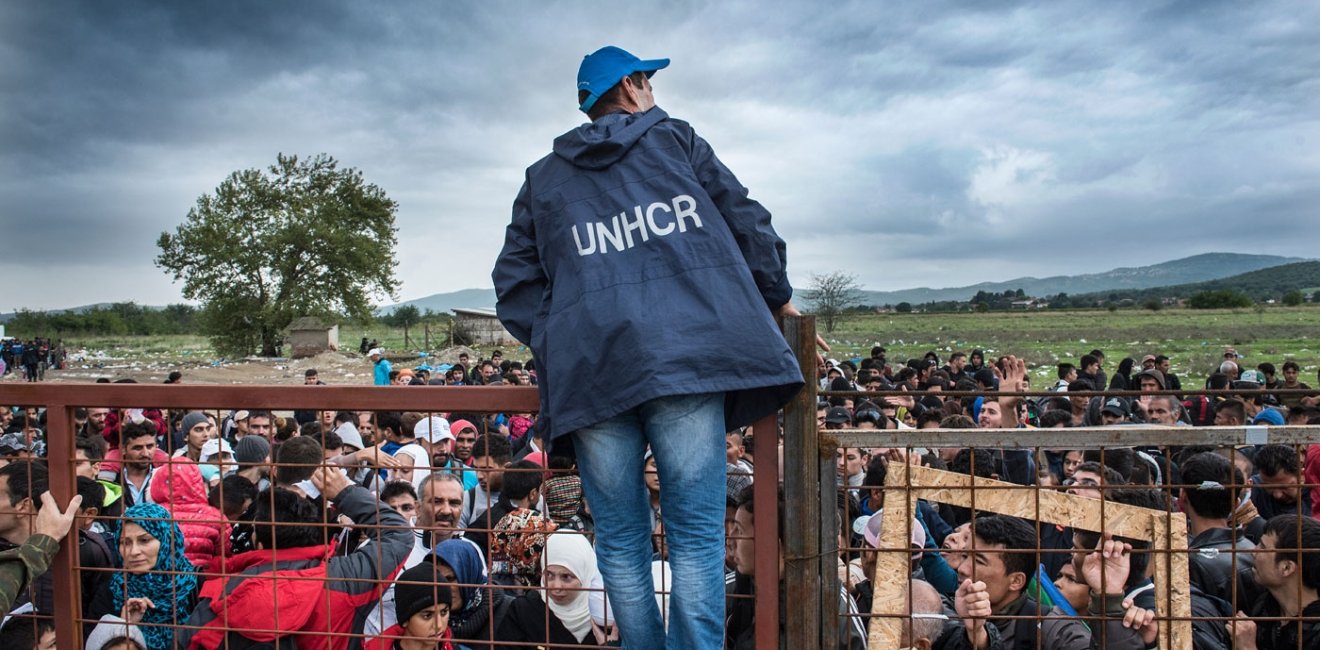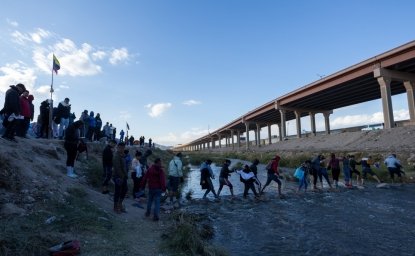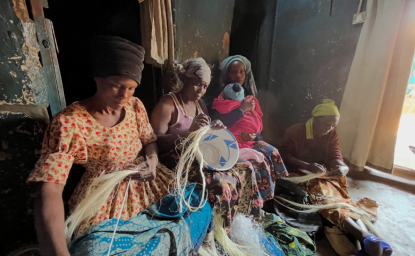Protracted refugee situations— circumstances in which more than 25,000 people from the same country have been living in exile for five or more consecutive years—simultaneously represent the most intractable and the most common forms of forced displacement. Indeed, it could be argued that protracted situations are close to coterminous with the more general contemporary experience of forced displacement, with about 16 million refugees officially falling into the category as of 2021. Staggering as they are, these numbers are almost certainly underestimations and further do not include the 5.9 million Palestinian refugees who have been displaced since 1948.
On the face of it, it would seem that the near-absolute predominance of protracted situations among refugees indicates a general failure of the international refugee aid system and its proliferation of institutions. Many such agencies emphasize their own funding limitations as an explanation for these evident shortcomings, and encourage more robust national and international support—both public and private—as the most effective response. Critics of such institutions, on the other hand, tend to point out that the UN refugee agencies and their partners have run large-scale operations for decades in many of these places, from Lebanon to Kenya and elsewhere, apparently without making a dent in the numbers. We might ask, then: what is the actual role of international institutions in the creation, maintenance, and dissolution of protracted refugee situations? How can we understand how they came to do what they are doing, whether it actually helps, and what a more effective policy might look like?
A historical view suggests a complicated long-term relationship between international aid and protracted refugee situations. The United Nations High Commissioner for Refugees, or UNHCR, emerged in the aftermath of the Second World War as a hub for organized, legal third-country resettlement. Originally imagined as a short- to medium-term institution, it gained a second wind in the late 1950s and 1960s as it became clear that the phenomenon of mass forcible displacement was moving from Europe to decolonizing countries. But as UNHCR began to imagine and negotiate the specifics of its longer-term existence, its fundamental practice shifted substantially. Responding to the demands of both its superpower backers and the host countries with which it had to deal, its officials sloughed off their legal role in favor of a new strategy of providing material aid to refugees in place: a practice that simultaneously protected developed countries from migrants and preserved the national interests of emerging postcolonial host states by using carefully controlled humanitarian aid to keep refugees contained and confined.
This deal seemed, initially, to serve the interests of all three key actors in the international sphere. UNHCR would be able to keep its doors open—indeed, to grow exponentially over the subsequent decades. Wealthy states could present a humanitarian public face by funding UNHCR while remaining protected from mass migration. And host states, many of them run by fragile governments seeking to bolster their own rule in the immediate aftermath of decolonization, would be sheltered from the potentially destabilizing effects of large-scale refugee movement into and around their territories. But as this new practice unfolded, it proved to have a calcifying effect on refugee circumstances. In the end, the internationalist institutionalization of aid-in-place—as well-intentioned as it might have been—would substantially contribute to the contemporary phenomenon of protracted refugee situations with no end in sight.
Legal Regimes: The 1951 Convention and the Origins of UNHCR
UNHCR was initially imagined as a legal clearing-house for refugees in camps to find new destinations and new citizenships in the specific context of post-World War II Europe. Its mandate was tied to the 1951 Refugee Convention, which limited international responsibility for displaced people by defining refugees only as those displaced “by events occurring before 1 January 1951 and owing to well-founded fear of being persecuted for reasons of race, religion, nationality, membership of a particular social group or political opinion”—a carefully calibrated definition that in the main could be applied only to European victims of either the Nazis or the Soviets. The agency, established in 1950, was charged with arranging legal resettlements for those still in Europe’s “displaced persons” camps, and was imagined as a small and temporary institution. When UNHCR’s first director, Gerrit van Heuven, arrived in Geneva to take up his new post, he reported finding little more than “three empty rooms and a secretary.” Many at the UN and elsewhere assumed that once Europe’s last displaced persons were finally discharged from the postwar camps, UNHCR would have no further reason to exist.
In the end, the internationalist institutionalization of aid-in-place—as well-intentioned as it might have been—would substantially contribute to the contemporary phenomenon of protracted refugee situations with no end in sight.
In its first years, UNHCR struggled to compete with other, more strongly American-backed institutions and to demonstrate a need for its own services to an international community skeptical of its value. Van Heuven, though, was determined to keep the agency’s doors open; and in 1956 a new crisis in Hungary offered an opportunity for the agency to assert its centrality to the Cold War international order. On the somewhat tendentious claim that events in Hungary were a long-term consequence of European politics before 1951 and that Hungary was therefore fair game for the UNHCR, the organization declared itself to be “the only agency capable of coordinating both international refugee relief and the collections of funds for emergency material assistance.” Its eventual repatriation of some 20,000 Hungarian refugees, and the mass resettlement of the rest in 37 countries across the globe, established it as an agency of note and finally brought the American support it had long been seeking.
More centrally, its engagement in Hungary—technically a case beyond its legal purview—appeared to open the door for the expansion of its mandate beyond the conditions of the 1951 Convention, whose refugees were now mostly dispersed in one way or another. With the rise of new crises of displacement outside Europe, it seemed that perhaps the world would have need of a more permanent UNHCR after all. As events would demonstrate, though, survival into a different era would mean that the agency would have to reconsider its commitment to legalized third-country resettlement as the main solution to mass displacement.
Developing Containment: From Europe to Postcolonial Countries
The specific Cold War context of the Hungarian crisis meant that Western governments were largely willing to offer permanent resettlement to mostly white European victims of Soviet brutalities. But UNHCR’s next foray happened in Hong Kong, where some 700,000 refugees fleeing revolutionary China made up a third of the territory’s population by 1956; and here the solution of resettlement proved impossible to implement. As the head of UNHCR’s Hong Kong operation reported despondently, there was “a very great reluctance to accept Chinese immigrants anywhere in the world.”
If the agency wanted to operate in these new realms with the support of the United States and its allies, it would need to find a way of offering aid to displaced people without asking its sponsors to open their doors and their labor markets to nonwhite, non-European refugees. So the following year, UNHCR approached the General Assembly with a new proposal: to be allowed to offer practical assistance to the Hong Kong refugees on an emergency basis, without looking toward more permanent solutions of repatriation or resettlement. Under this “good offices” exception, the international community would fund UNHCR to take care of refugees in place without trying to move them towards some kind of legal or political status elsewhere.
Protracted refugee situations— circumstances in which more than 25,000 people from the same country have been living in exile for five or more consecutive years—simultaneously represent the most intractable and the most common forms of forced displacement.
This premise of aid-in-place without legal assistance soon moved toward a more active practice of refugee confinement. In 1957, as the Algerian war of independence was intensifying, the Tunisian government headed by Habib Bourguiba approached UNHCR with a request for assistance dealing with the tens of thousands of Algerians desperately trying to escape the depredations of the French colonial military by fleeing into Tunisia. Morocco, which was seeing a similar influx on its eastern edge, soon followed suit. It was an especially fraught situation for the agency, which did not want to alienate the French government by declaring it a persecutor or offering help to its declared enemies. The agency’s subsequent compromise, designed to placate the French as well as the postcolonial Tunisian and Moroccan host states, was quietly to maintain displaced Algerians in the border areas, offering basic provisions in confined tent encampments and thereby preventing the refugees from offering aid or information to the Algerian nationalist resistance.
By premising the provision of aid on the practice of physical encampment, without any attempt to assist refugees legally or politically with resettlement, the agency was trying to endear itself to those whose backing it needed: imperial donors in wealthy countries, and post-imperial host states in developing countries. The plan proved appealing to both constituencies, and was soon being deployed well beyond North Africa. Indeed, after the Algerian war the confinement of postcolonial refugees, perhaps pending eventual repatriation but not anticipating legal resettlement elsewhere, quickly became an acknowledged aspect of UNHCR’s global role.
The 1967 Protocol and UNHCR Expansion
When the broader United Nations decided in 1967 to revisit the temporal and geographic restrictions of the 1951 Convention and expand UNHCR’s mandate, it changed the legal definition of a refugee established in the 1951 Convention by removing the temporal restriction of displacement before 1951. But the 1967 Protocol did not revisit the other pieces of the definition, which required demonstration of persecution on the basis of ethnicity, nation, race, religion, or social group—a standard postcolonial refugees mostly did not meet, or at least often had difficulty demonstrating. UNHCR essentially understood the Protocol, then, not as an expansion of the original legal regime of asylum and resettlement beyond Europe but as the formalization of the material aid it had undertaken around the globe under the “good offices” clause—aid that was inextricably tied to the practice of containment.
After the 1967 Protocol, UNHCR exponentially expanded its activities in low-and-middle income countries. By the 1990s, it was involved in all sorts of long-term refugee situations, from Congo to Vietnam, which it understood as exercises both in providing aid and in what was coming to be called “migration management.” To preserve its institutional relationships with both donor states and host countries, the agency had to demonstrate repeatedly that it could prevent refugees from moving around—a requirement that it met mostly by using material aid to immobilize people where they were. As the famous refugee scholar Barbara Harrell-Bond noted, UNHCR had now come to operate on the premise that “material aid has the power to move populations… [It] can attract people from point a to point b and back again to point a.”
Absent the kind of parallel legal regime focused on resettlement that had characterized UNHCR’s very early years, such an approach meant that refugees very often found themselves in situations where their survival depended on their political neutralization via physical immobilization. And similarly, this provision of aid in situ encouraged the construction and maintenance—and, eventually, the expansion—of aid infrastructures that international agencies like UNHCR were not often eager to dismantle. Funding, always insufficient, tended to go into the needs of these already-extant material operations rather than investigating alternative legal and political paths for refugees that were significantly harder to sell to donor states and host countries than a simple humanitarian provision of food, water, and shelter. In other words, this approach institutionalized a physical apparatus of international aid that tended to fossilize situations of displacement.
History and Policy: Assessing Containment
It was in this way, then, that the international refugee regime itself helped—and continues to help—to maintain and even extend already-protracted refugee situations, in direct opposition to its own stated goals. Shifting this pattern will require a reassessment of how internationalist agencies operate and what (and whom) they are really for. Historically speaking, it’s a change that has occurred before; the refugee regime didn’t always operate in this way, and it doesn’t have to continue to do so now. But both host states and donor countries will have to think seriously about whether the bargain they have struck with UNHCR, under which the agency will keep refugees alive primarily by confining them on a long-term basis to approved camps, settlements, and host states, is really serving anyone’s best interests. The human flourishing of millions of refugees around the world is at stake, to be sure. But so is the security of UNHCR’s backers and partners; for history tells us that premising international political stability on the perpetual confinement of large populations is, over the long run, likely to prove a dangerous bet.
Laura Robson, Oliver-McCourtney Professor of History at Penn State University, is a member of the Refugee and Forced Displacement Initiative (RAFDI) Working Group and a former Wilson Center fellow.
Author

Oliver-McCourtney Professor of History, The Pennsylvania State University

Refugee and Forced Displacement Initiative
The Refugee and Forced Displacement Initiative (RAFDI) provides evidence-based analyses that translate research findings into practice and policy impact. Established in 2022 as a response to an ever-increasing number of people forcibly displaced from their homes by protracted conflicts and persecution, RAFDI aims to expand the space for new perspectives, constructive dialogue and sustainable solutions to inform policies that will improve the future for the displaced people. Read more







